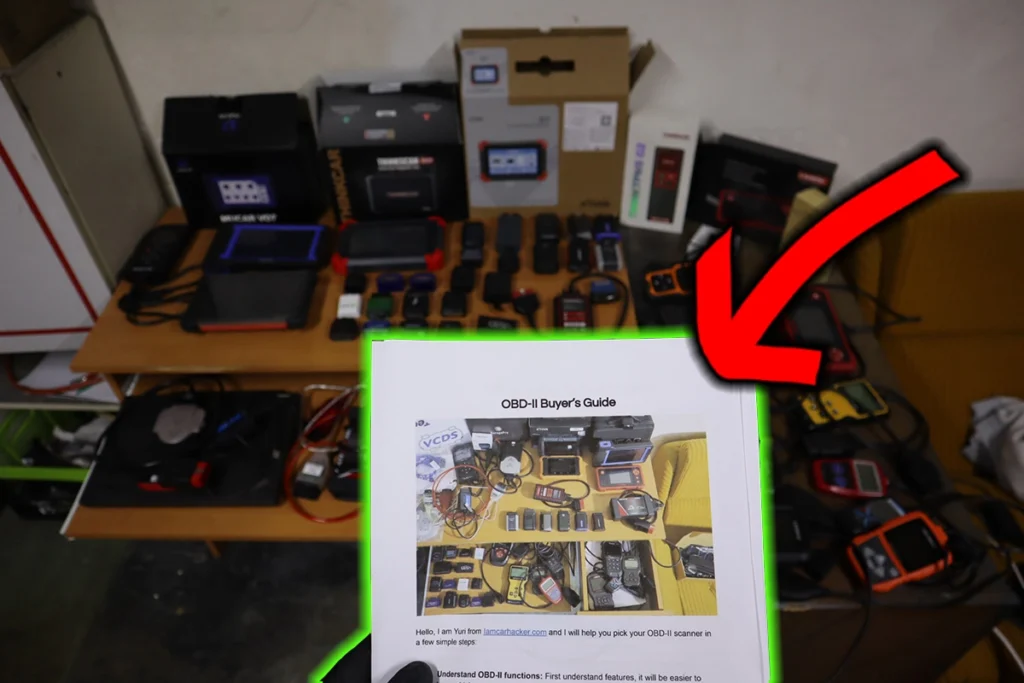The code P0705: Transmission Range Sensor Circuit Malfunction (PRNDL Input) indicates a malfunction within the transmission range sensor circuit. This fault is often rooted in either a physical misalignment or an electrical issue within the system that communicates your vehicle’s gear position to the computer.
P0705 quick overview
| Meaning | P0705: Transmission Range Sensor Circuit Malfunction (PRNDL Input) |
| Is it serious? | Potentially serious, as it can affect the drivability and transmission operation of the vehicle. |
| Possible causes | – Misaligned or faulty transmission range sensor/switch – Corroded, damaged, or loose wiring and connectors – Faulty or misadjusted throttle position sensor (TPS) – Malfunctioning inhibitor switch or missing inhibitor relay – Issues with the transmission control module (TCM) or powertrain control module (PCM) – Poor electrical grounding in the transmission system |
| How to diagnose? | Check for additional codes: Begin with a scan for other codes that could be related to the P0705. Visually inspect: Look over the wiring and connectors for obvious damage. Verify sensor operation: Use a diagnostic scanner to ensure the transmission range sensor is reporting the correct gear position. Test TPS signal: Confirm that the throttle position sensor is operating within specifications. Adjust range sensor/switch: If necessary, realign the transmission range sensor to the manufacturer’s specs. Examine inhibitor relay: Check the presence and function of the inhibitor relay, if applicable. Check grounds: Ensure proper grounding of the transmission and related components. |
In simple terms, when your car’s computer sees the P0705 code, it’s because it’s having trouble understanding which gear you’ve selected. This could be because of a faulty sensor, a wiring issue, or even just a loose connection. It’s like the car’s way of saying it’s confused about whether it should be in park, reverse, or drive.
Free PDF: How to choose OBD2 scanner

I’ve made you a free PDF to choose the OBD2 scanner in 5 minutes.
✅ Which OBD2 scanner is best?
✅ Which type should you get (DIY, Pro, Hobby)
✅ What is the best scanner for the exact brand/feature (e.g best for BMW)
✅ How to get a Bi-Directional tool for as cheap as $40
✅ Discount coupons for scanners
PDF is 100% free and it is designed to help you pick a scanner in less than a few minutes! Not a boring 50-page guide.
Just tell me where to send it.
How to fix P0705 – learn from mechanics
I looked into P0705 service cases at iatn.com website where in the private forums the mechanics seek advice from other mechanics. I looked up a bunch of cases to help you decide how to fix your issue and see what would a real mechanic do to solve it.
Case #1: Chevrolet
Vehicle Information
- 1997 Chevrolet Lumina, 3.1L, 1-2 Shift issue
Issue + Repair History
- Harsh 1-2 shift; other gears fine
- Error code: PO705A
- Range switch intermittently out of range, replaced it
- Problem persisted; replaced and reprogrammed PCM
- Hard shift remains, code PO705A returned
Other OBD2 Codes + Test Results
- N/A
Suggestions to Fix Issue
- Verify existence of DTC 1811 with scan tool
- Check if transmission is 4T65E or 4T60E, as the problem differs with the type
- If 4T65E, test pressure control solenoid with specific amp readings
- If 4T60E, the TCC applying in second gear might cause harsh shift
- Check line pressures for both transmissions
- Determine line pressure and EPC current during 1-2 shift
- EPC solenoids often fail; test EPC function
- Check for high line pressure, damaged 1-2 accumulator piston seals or spring, stuck 1-2 accumulator valve, misplaced number 2 checkball
- Code PO705 cannot cause a harsh shift; investigate modulator, check vacuum and line pressure, examine accumulator spring, or 1-2 accumulator reg valve
Final Fix
- Re-adjusted the range switch and cleared pending codes; vehicle performed well for 4 days afterward
Case #2: Buick
Vehicle Information
- 1994 Buick Park Avenue, 3.8L engine
Issue + Repair History
- Initial gear engagement requires shifting to manual low first after a period of rest
- No initial engagement in “Drive” or “Reverse” until after manual low engagement
- Issue resolves in subsequent shifts during the day
- No previous repairs mentioned, only routine fluid changes
- DTC: P0705 – Transmission Range Sensor Circuit Malfunction
Suggestions to Fix Issue
- Check and replace transmission range sensor
- Inspect wiring harness for damage or corrosion
- Test transmission fluid pressure
- Verify proper transmission fluid level and condition
- Consider resetting the computer system
- Mechanical inspection of the transmission internals
Final Fix
- The final repair solution is unknown, customer sold the vehicle.
Case #3: Ford
Vehicle Information
- 2000 Ford Focus ZTS, 2.0L
Issue + Repair History
- Clunking when braking
- Unexplained acceleration when lifting foot off the accelerator
- Service Engine Soon (SES) light on
- DTC P0705 – Transmission Range Sensor Circuit Malfunction
- No Transmission Control Clutch (TCC) application, harsh downshift when braking
- Replaced Transmission Range (TR) sensor three times (2 Ford & 1 aftermarket)
- Battery drain issue addressed by removing fuses F35 & F36
Suggestions to Fix Issue
- Check ground connection in the rear hatch for the tail lights
- Ensure TR sensor connector is fully seated
- Follow workshop manual diagnostics for DTC P0705
- Verify grounds are not causing voltage fluctuation
- Inspect stop lamp circuit, particularly ground circuit G46 in luggage compartment
Final Fix
- Tightened loose ground screw in the rear hatch for the tail lights
- Problem resolved after test drive, fuses F35 & F36 left out to alleviate battery drain
Case #4: Jeep
Vehicle Information
- 1997 Jeep Cherokee Country, 4.0L
Issue + Repair History
- MIL due to code P0705 (Transmission Range Switch Input Low)
- Vehicle had starting difficulties, requiring neutral to start
- Replaced transmission range switch
- Issue with the new switch found; incorrect signaling for drive and 3rd gear
Final Fix
- Replaced the faulty new transmission range switch with another one
Computer Codes & Descriptions
- P0705: Transmission Range Switch Input Low
- 71: Aux 5 Volt Ref Low
Case #5: Nissan
Vehicle Information
- 1997 Nissan Altima GLE, 2.4L
Issue
- MIL with code P0705 (Transmission Range Sensor Malfunction)
- Drive cycle monitor not completing, crucial for CA SMOG inspection
- Vehicle runs well despite the code
- Code reappears after the second trip, preventing SMOG certification
Attempted Fixes
- Replaced safety neutral inhibitor switch; problem persisted
- TPS signal tested and found to be good
- Different TCM plugged in; monitors still not completing, code reappears
- Inhibitor relay (gray) located and installed
- Adjusted inhibitor switch
- Repaired TPS connector
Community Feedback and Suggestions
- Check transmission range sensor switch and wiring
- Verify gear selection reading on scanner to confirm TCM and switch wiring
- Check inhibitor relay wiring to the inhibitor switch
- Check adjustment for the inhibitor switch and TPS
- Replace and adjust the TPS
- Perform a backpressure test on the catalytic converter
- Pin-out on range sensor wiring to PCM to ensure wiring integrity
- Consult II may be needed to set TPS reference voltage through the TCM
- Check TPS for proper adjustment, as it has an idle switch and a W.O.T switch that TCU needs to detect
- Possible ground issue at valve body inside transmission pan, suggestion to solder the ground eyelet
Final Fix
- Adjusted inhibitor switch, which was initially misadjusted
- Found and installed the missing inhibitor relay in the engine compartment
- Fixed a bad electrical connection at the TPS connector
How to diagnose P0705
I made you an overview of solving this DTC, based on all the advice that was suggested by certified mechanics to address this issue in previously mentioned service cases.
| Common Advice | Diagnostic Step Description |
|---|---|
| Check the transmission range sensor switch | Inspect the sensor and its harness for damage, misalignment, or corrosion. |
| Verify gear selection reading with scanner | Use a diagnostic scanner to confirm that the gear position is accurately reported by the transmission range sensor to the TCM. |
| Adjust and verify the position of the inhibitor switch | Adjust the switch according to the manufacturer’s specifications and verify with appropriate alignment tools. |
| Inspect TPS connection and signal | Check the throttle position sensor connector for corrosion or looseness, and verify the signal is within specification. |
| Test wiring integrity between sensor and TCM/PCM | Perform a pin-out test or continuity test to ensure no breaks or shorts in wiring. |
| Check and/or replace the inhibitor relay | Locate and inspect the inhibitor relay for operation and ensure it is present and functioning correctly. |
| Ensure proper ground connections | Verify ground connections, especially at the transmission or valve body, to prevent signal issues. |
Free PDF: How to choose OBD2 scanner

I’ve made you a free PDF to choose the OBD2 scanner in 5 minutes.
✅ Which OBD2 scanner is best?
✅ Which type should you get (DIY, Pro, Hobby)
✅ What is the best scanner for the exact brand/feature (e.g best for BMW)
✅ How to get a Bi-Directional tool for as cheap as $40
✅ Discount coupons for scanners
PDF is 100% free and it is designed to help you pick a scanner in less than a few minutes! Not a boring 50-page guide.
Just tell me where to send it.

Hi, I am Juraj “Yuri” Lukacko. I got frustrated by unhelpful and scammy mechanics, so I decided to learn everything about car diagnostics myself. I test dozens of new car diagnostic tools every month along with learning new strategies to fix and customize cars. About Juraj Lukacko (Yuri)